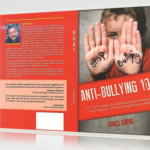Part One in an NPR Ed series on mental health in schools.
You might call it a silent epidemic.
Up to one in five kids living in the U.S. shows signs or symptoms of a mental health disorder in a given year.
So in a school classroom of 25 students, five of them may be struggling with the same issues many adults deal with: depression, anxiety, substance abuse.
And yet most children — nearly 80 percent — who need mental health services won’t get them.
Whether treated or not, the children do go to school. And the problems they face can tie into major problems found in schools: chronic absence, low achievement, disruptive behavior and dropping out.
Experts say schools could play a role in identifying students with problems and helping them succeed. Yet it’s a role many schools are not prepared for.
Educators face the simple fact that, often because of a lack of resources, there just aren’t enough people to tackle the job. And the ones who are working on it are often drowning in huge caseloads. Kids in need can fall through the cracks.
“No one ever asked me”
Katie is one of those kids.
She’s 18 now. Back when she was 8, she had to transfer to a different school in Prince George’s County, Md., in the middle of the year.
“At recess, I didn’t have friends to play with,” she recalls. “I would make an excuse to stay inside with the teachers and finish extra work or do extra credit.”
We’re not using Katie’s last name to protect her privacy. She’s been diagnosed with bulimia and depression.
She says that in the span of a few months, she went from honor roll to failing. She put on weight; other kids called her “fat.” She began cutting herself with a razor every day. And she missed a ton of school.
“I felt like every single day was a bad day,” she says. “I felt like nobody wanted to help me.”
Katie says teachers acted like she didn’t care about her schoolwork. “I was so invisible to them.”
Every year of high school, she says, was “horrible.” She told her therapist she wanted to die and was admitted into the hospital.
During all this time, she says, not a single principal or teacher or counselor ever asked her one simple question: “What’s wrong?”
If someone had asked, she says, she would have told them.
Who should have asked?
We talked to educators, advocates, teachers and parents across the country. Here’s what they say a comprehensive approach to mental health and education would look like.
The family
The role: The first place to spot trouble is in the home, whether that trouble is substance abuse, slipping grades or a child who sleeps too much. Adults at home — parents, siblings, other relatives — are often the first to notice something going on.
The reality: Many families do not know what to look for. Sometimes a serious problem can be overlooked as “just a phase.” But it’s those sudden changes — angry outbursts, declining grades, changes in sleeping or eating — that can signal problems. When something unusual crops up, families can keep in close touch with the school.
The teacher
The role: During the week, many students see their teachers even more than their own families. Teachers are in a prime spot to notice changes in behavior. They read essays, see how students relate with other kids and notice when they aren’t paying attention.
The reality: Teachers already have a ton on their plates. They’re pressured to get test scores up, on top of preparing lessons and grading assignments. Plus, many teachers receive minimal training in mental health issues. But when they do see something concerning, they can raise a flag.
The social worker
The role: Social workers act like a bridge. If teachers come to them with a concern — maybe a child is acting withdrawn — one of the first things they’ll do is call home. They see each child through the lens of their family, school and community. They might learn that a family is going through a divorce or homelessness.
The reality: There aren’t enough of them. According to one model, every school should have one social worker for every 250 students. The reality is that in some schools, social workers are responsible for many more.
The counselor
The role: In some schools, counselors focus solely on academics: helping students pick classes and apply to college. But in others, they also act a lot like social workers, serving as a link to families and working with students who need support.
The reality: Like school social workers, there just aren’t enough counselors. On average nationwide, each counselor is responsible for nearly 500 students. The American School Counselor Association recommends a caseload nearly half that size.
The special education teacher
The Role: Special education teachers may start working with students when a mental health problem affects the ability to do school work. They are primarily responsible for working on academic skills.
The reality: Again, there aren’t enough of them. Nearly every state has reported a shortage of special education teachers. Half of all school districts say they have trouble recruiting highly qualified candidates.
The school psychologist
The Role: Here’s one job that, on paper, is truly dedicated to student mental health. School psychologists are key players when it comes to crisis intervention and can refer students to outside help, such as a psychiatrist.
The reality: If you sense a pattern here, you’re right. In the U.S., there is just one school psychologist for every 1,400 students, according to the most recent data available from the National Association of School Psychologists.
The school nurse
The role: Most any school nurse will tell you, physical and mental health are tough to separate. That puts nurses in a prime spot to catch problems early. For example: A kid who comes into the nurse’s office a lot, complaining of headaches or stomach problems? That could be a sign of anxiety, a strategy to avoid a bully, or a sign of troubles at home.
The reality: The U.S. Department of Health and Human Services recommends at least one nurse for every 750 students, but the actual ratio across the country can be much higher.
The principal
The role: As the top dogs in schools, principals make the big decisions about priorities. They can bring in social-emotional, anti-bullying and suicide-prevention programs.
The reality: Principals also have a lot on their plates: the day-to-day management of student behavior, school culture and teacher support.
Getting help, and “excited for life”
Katie says things started to turn around for her when she met a nurse at the Children’s National Health System in Washington, D.C., who finally showed interest in what was wrong.
Now, she’s begun college and wants to be a pediatric nurse.
“I’m doing a lot better now” she says. ” Obviously, I mean, I’m a lot happier. I’m excited for school. I’m excited to graduate. I’m excited for life.”
When you are finished with this article read this one:
Schools and Mental Health: When The Parent Has To Take Charge












